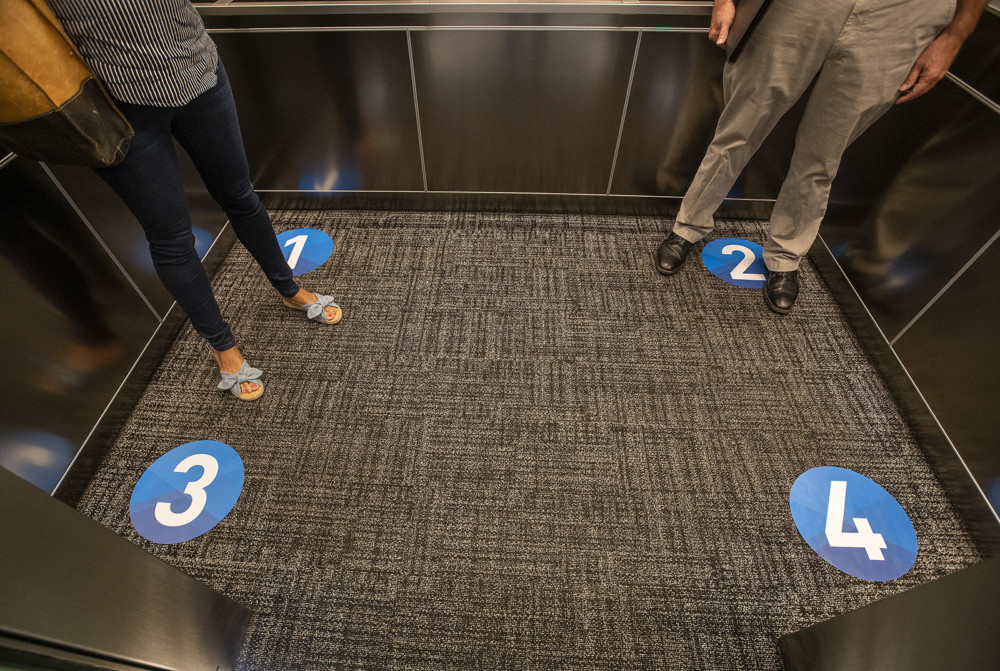By Conor Sen
Bloomberg Opinion
WWR Article Summary (tl;dr) As office building vacancy rates skyrocket, especially in expensive cities, some companies may be able to splurge on more space for employees. As Conor Sen reports, “If the selling point 10 years ago was foosball tables, beanbag chairs, and free beer, now it might be large, private offices for employees and an escape from a cramped or less-than-ideal working space at home.”
Bloomberg
Perhaps no part of the economy has a more uncertain future right now than office buildings.
The pace of workers coming back into offices is more of a trickle than a flood. And enough tenants are choosing not to renew as leases come due that vacancy rates are skyrocketing, particularly in expensive cities.
There’s no sugarcoating this dynamic for owners of office buildings, but for everyone else it may turn out to be a welcome change. In the long run, as tenants take advantage of lower rents to find new uses for space, this crisis may turn out to be more of an easing of constraints than a collapse in demand.
Keep in mind that coming into the pandemic, the long-term trend in the office market was cramming more employees into less space because of the rise in rents. Between 2009 and 2018, the average square footage per employee fell by 8.3%.
Some companies embraced open office plans as a way to increase collaboration and productivity, but for others it may have been a choice dictated by economics. Square footage per employee is lower in high-priced coastal metros than it is in the rest of the country; as one might expect, it’s cheaper to rent a ton of space in Dallas than it is in Manhattan.
To the extent rising vacancy rates persist and lead to lower rents, which should be the case at least until this public health crisis is over, it becomes an opportunity for companies to take advantage of their leverage and splurge on more space at a discount.
This may be an important competitive issue for employers trying to lure their employees back into the office. If the selling point 10 years ago was foosball tables, beanbag chairs and free beer, now it might be large, private offices for employees and an escape from a cramped or less-than-ideal working space at home. It also means office tenants can afford more meeting space and common areas than they could before.
That’s one possibility.
Another is that cheaper rents might make top-tier office markets affordable for tenants who previously were priced out. Rather than Manhattan office space being a luxury reserved for major banks, hedge funds or tech companies, it can once again be an option for companies of more modest means, or even startups, bringing an economic diversity to the city that seemed to be going in the opposite direction.
The basic idea here is what’s known as Jevons paradox: Technological progress that leads to more efficient use of a resource gets offset in part by additional demand for that resource. For instance, automobiles have become much more fuel-efficient over the past 40 years, even before the recent growth in electric vehicles. But instead of us all driving around in cars that get 60 miles to the gallon, it’s meant that trucks and sport utility vehicles with powerful but fuel-efficient engines have become a growing share of the new-auto market.
Not everyone will come out a winner if this is what the new normal looks like in three to five years. Office rents falling substantially, say, 20%, would be a windfall for tenants but devastating to landlords. Those losses would have to be written down. Office buildings are big contributors to local tax bases, and lower property values would shrink any city’s tax digest, constraining local government budgets.
Office workers might cheer moving from crowded open floor plans into their own private offices, but if that means fewer people per building, it also means less demand for local dry cleaners and lunch spots that rely on those workers for business. It’s also possible that office landlords will fight this transition by accepting higher vacancy rates rather than lower rents, which would delay what is perhaps an inevitable transformation.
Midtown Manhattan and the financial district in San Francisco are unlikely to be ghost towns in five years even in the scenario where we see a substantial, full-time shift to work from home. The question is just how this transition plays out, and how tenants reimagine the uses for office space in a world with cheaper rents.
Conor Sen is a Bloomberg Opinion columnist. He has been a contributor to the Atlantic and Business Insider.
___
Distributed by Tribune Content Agency, LLC.














































































































































































































































































































































































